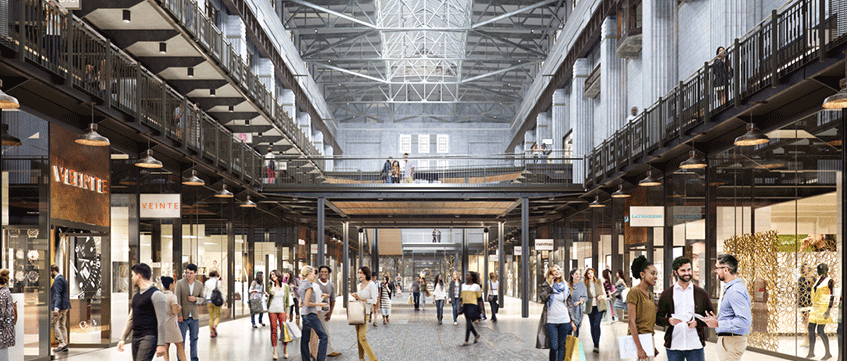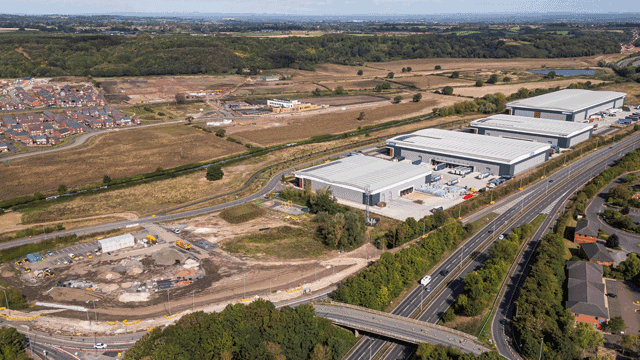How to thrive in a low supply, high rent environment? Stacey Meadwell offers advice from experts on all sides of the property playing field: landlords, occupiers, developers and investors
Ask three or four London property persons how long a market cycle is and you won’t necessarily get the same answer. What is clear is that the market has shifted from investor-led demand pushing up capital values to something that is more likely to be driven by rental increases. And those rental increases are coming from an almost historic low level of new office stock.
But what does this all mean for property players? What are the opportunities? What should you be looking to do to capitalise on the market at this stage of the cycle? This is what the experts had to say.
If you are a landlord…
There are those rental increases to think about. Prime West End and City office rents have risen by 7% and 13% respectively in the past 12 months and are forecast to rise by similar levels this year, according to Carter Jonas’s occupancy costs report published last week.
So the time is ripe to manage office assets to maximise rental growth. The key is speed.
Deloitte partner Stephen Peers says: “There is so little being built, particularly in the West End, that if you can deliver into this market with a short lead-in, then you should.”
Short lead-in means refurbishment rather than knock down and rebuild, he adds, but it works only if it’s viable to extract existing tenants using break clauses and expiries.
CBRE executive director Mike Edwards agrees it is a good time to be getting space back from tenants and returning it to the market. He says: “If you have any risk to take, now is the time to do it. Low supply, relatively healthy demand, low interest rates and a massive amount of money – there aren’t many times during the cycle when all those things are in place.”
Timing, however, is of the essence. Tony Parrack, partner, Edward Charles & Partners, says: “The elephant in the room is, where are we in the business cycle? I would have a different answer in 12 months’ time. Yes, landlords should be taking back space and offering it in a tenant-friendly way but in 12 to 18 months landlords may be a bit more cautious.”
If you are an occupier…
Doesn’t look good for occupiers at the moment, does it? There’s little supply and rising rents. Ben Cullen, partner in the occupier team at Cushman & Wakefield, puts it into context: “If you think that last year there were 42 acquisitions of space over 50,000 sq ft in central London and within current availability there are 35 buildings that can offer 50,000 sq ft, we have problems ahead.”
The obvious thing for an occupier to do then, if a big jump in rent is an issue, is to try to extend an existing lease. Landlords, however, hold most of the cards; the time of trying to keep occupiers in residence regardless of the concessions are over.
“Time is the best asset,” says Cullen about occupiers’ strategy. “Thinking early opens up more opportunities. No one wants to be the guy who does the most expensive deal in the market and look like an idiot in two years.”
Moving certain functions of the business out of London to reduce space requirements is an option that some companies took during previous boom times.
Similarly, emerging locations could be an option if central London isn’t viable, suggests Cullen.
Edward Charles & Partners’ Parrack agrees. He says: “Tenants will go to secondary locations usually for cost savings and will compromise specifications and sometimes style.”
If you are a developer…
If you’ve got commercial space already under construction, then pat yourself on the back. If you are ready to go with a scheme and just waiting for the security of a prelet or partial prelet, then you can probably pat yourself on the back based on last year’s high take-up of prelets, particularly in the West End.
If you’ve got the financial backing and nerve to build speculatively in central London, then now might be the right time.
“Yes, in principle it is a good time to spec build, as long as you’ve got a good scheme,” says CBRE’s Edwards. Of course everyone’s definition of a “good scheme” will vary. Otherwise it is time to look to pastures new, says Deloitte’s Peers. It’s time to assess where the up-and-coming locations are.
“It is why Whitechapel is being talked about in a way it wasn’t talked about before,” says Peers. “I’ve also seen developers walking around Hackney Wick.”
Derwent London then must be feeling pretty smug. The developer bought in Whitechapel at the end of 2012 with a view to redevelop in the medium term. Having successfully turned Angel into a credible office location in recent years, perhaps the advice should be to keep an eye on what Derwent London buys next for a longer-term play?
John Burns, the firm’s chief executive, merely sees it as “business as usual” for the firm. Buildings in its development pipeline will be built out as planned. “I think the cycle is going to run for a while. I don’t have any fears,” he says.
However, he does add that buying new stock and therefore future development opportunities is tough – it’s all off-market deals. “I would rather pick properties up in a competitive market,” he says, adding: “We haven’t changed the script from a year or so ago.”
If you are an investor…
The prospect of rental growth in the office sector means that London remains an attractive proposition, but don’t expect the same level of returns, says Julian Sandbach, head of West End capital markets at JLL.
He says: “IPD returns for offices were 20% and it is hard to see another year for those sort of returns. But we should still see a healthy level of returns this year.”
Derwent London’s chief executive John Burns may describe finding acquisitions for development opportunities as “tough” but Sandbach says the investment market is still “liquid”.
With good evidence of a confident occupier market and developers continuing to look for third-party funders for office development, this might be another good option for overseas money.
Sandbach says that 65% of transactions in central London last year were done by overseas money, and that partnerships between overseas and UK-based companies was a trend last year. “I see that market carrying on,” he adds.
If you are in residential and alternative asset classes…
The message for residential development seems to be avoid super prime and look to zones 2 and 3. Peter Burns, managing director, CBRE, says the market is still strong for schemes of £1,100-£1,300 per sq ft. Mark Bladon at Investec doesn’t see any appetite to fund residential development more than £2,000 per sq ft.
When it comes to alternative asset classes it’s a different story. Bladon reckons now is a good time to sell any student housing in your portfolio. Why? “Because you’ve taken some planning profit and developers’ profit, have had some rent rises and have wrung as much value as you can out of an asset that is three to five years old. It’s an excellent time to sell because yields are coming in.”
stacey.meadwell@estatesgazette.com
EG London: February
• Inside Bishopsgate Goodsyard
• Building managers: Ready for anything
• EG London Forum: Migration and EU membership











